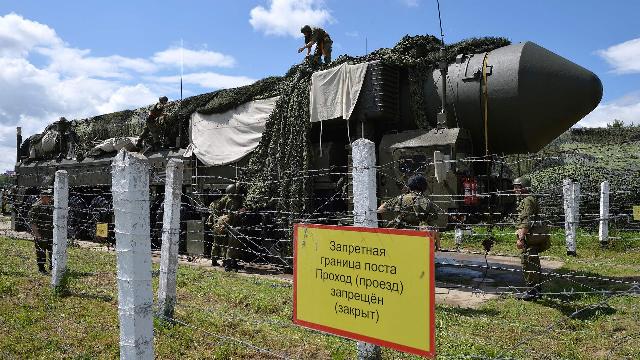China has become the leader in the increase in the number of warheads
Of all the nuclear powers, China has been updating its nuclear forces most dynamically over the past year, the Stockholm International Peace Research Institute (SIPRI) has calculated. If this process continues at this pace, by the end of the decade it will be comparable in its capabilities to Russia and the United States. Other members of the club are not far behind — the UK has increased the number of warheads, and France is actively developing delivery vehicles. Russia remains the absolute leader in the number of warheads, which, according to President Vladimir Putin, can make changes to its nuclear doctrine. What changes have occurred in the nuclear arsenals of different countries — in the material of Izvestia.
How many warheads do nuclear powers have
The data published in the annual SIPRI Yearbook 2024 is not official, but is based on an expert assessment, taking into account all the information available to SIPRI. So, the largest stocks of nuclear weapons today are in Russia (the total number of 5,580 warheads, including combat—deployed and in storage — 4,380) and in the United States (the total number of 5,044, combat-deployed and in storage - 3,708). The warheads placed on different carriers amount to 1,710 in Russia and 1,770 in the United States, respectively.
The total number includes decommissioned warheads, which are gradually being dismantled — about 200 units per year in both Russia and the United States. It should also be noted that the number of land-based and sea-based intercontinental ballistic missiles deployed and on combat duty in both countries includes warheads. The ammunition in storage — 2,670 units in Russia and 1,938 units in the United States — are warheads for tactical missile systems, aerial bombs, torpedoes, anti-aircraft missiles and other combat systems that are not on combat duty on a regular basis. Traditionally, in Russia, tactical nuclear weapons are represented by a wider range of ammunition and, accordingly, a large number of them.
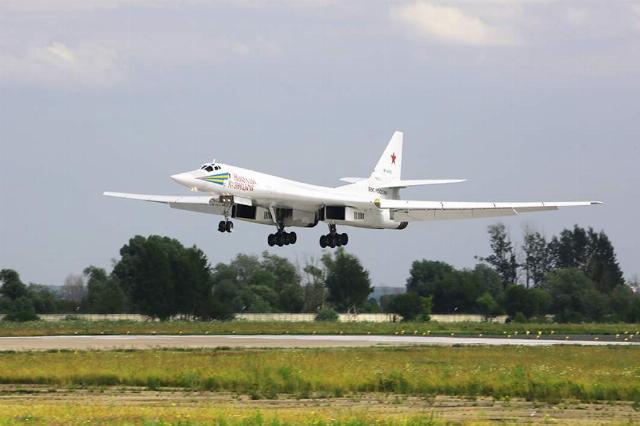
Tu-160 strategic bomber of Long-range aviation of the Russian Military Space Forces during preparation for the XIII International Aviation and Space Salon MAKS-2017 in Zhukovsky
Image source: Photo: TASS/Marina Lystseva
Russia, which has the largest nuclear arsenal, can make changes to its nuclear doctrine, President Vladimir Putin told a press conference in Vietnam on June 20. According to him, this is due to the fact that "the likely enemy is working on this, on new elements related to lowering the threshold for the use of nuclear weapons." But at the same time, Russia does not need the possibility of a preemptive nuclear strike, the president noted.
The total stocks of nuclear weapons of Great Britain and France are 225 and 290 units, respectively. In the UK, these are nuclear warheads of Trident-2 naval missiles, and in France, warheads of naval ballistic missiles and air-launched missiles, of which there are few (10 units).
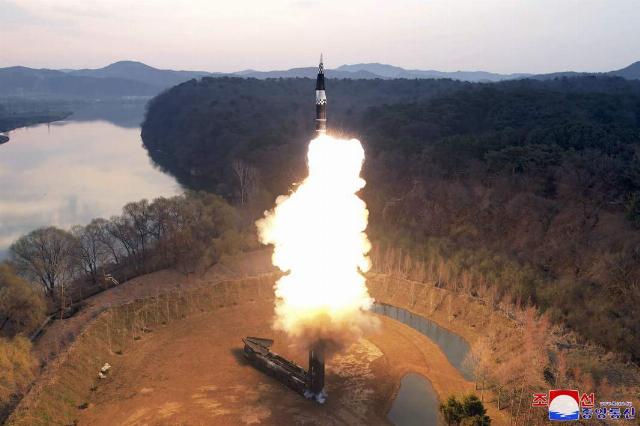
The test launch of a North Korean intercontinental ballistic missile at a test site in the DPRK
Image Source: Photo: AP Photo/KCNA
China is in third place in terms of nuclear weapons reserves, after Russia and the United States. It has an estimated 500 warheads, of which, according to SIPRI, 476 units are in storage and allegedly not placed on duty ballistic missiles. This may not be true, since China has a full—fledged nuclear triad - land-based intercontinental ballistic missiles, ballistic missiles on nuclear-powered missile submarines and heavy bombers capable of carrying nuclear weapons.
India, Pakistan and North Korea complete the list of officially nuclear powers. SIPRI believes that the nuclear reserves of India and Pakistan amount to 172 and 170 charges, and the DPRK's reserves are estimated at 50 units. Finally, Israel is not included in the SIPRI table, which does not recognize the presence of nuclear weapons, but most likely has several dozen nuclear warheads in storage.
What has changed
Now about the dynamics of changes in the world's nuclear arsenals. In recent years, Russia has been replacing massive mobile monoblock Topol ICBMs with multi-block Yars, which, of course, led to a slight increase in the number of nuclear charges and at the same time ensured an increase in the share of modern strategic missile systems. In parallel, the deployment of Iskander-M tactical missile systems as part of missile brigades was underway — nuclear charges were also to be laid in warehouses for them. The next step in building up Russia's nuclear arsenals will be the deployment of heavy Sarmat ICBMs, each of which is estimated to carry at least ten nuclear warheads. Quantitative changes in the marine component are not so noticeable — Bulava multi-block missiles are being deployed, which are gradually replacing multi-block liquid-fueled missiles of old projects. But in general, the quantitative indicators of nuclear arsenals have changed slightly due to the large stock of decommissioned warheads.
The United States is modernizing nuclear bombs for tactical and strategic aviation and is preparing to create and subsequently deploy a new Sentinel ICBM, which should replace Minuteman-III missiles in the coming years.
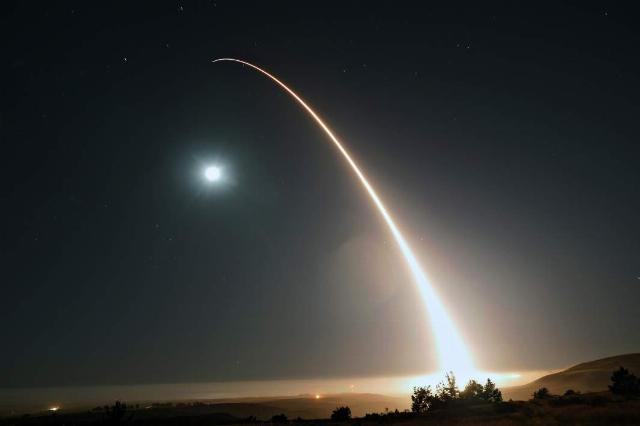
The test launch of the Minuteman III intercontinental ballistic missile at one of the US training grounds
Image source: Photo: Global Look Press/2lt. William Collette
China's nuclear reserves are developing most dynamically — according to SIPRI estimates, it has increased its arsenal from 410 warheads in January 2023 to 500 in January 2024. At this rate, there is a possibility that by the end of the 2020s, the PRC may reach about the same level in terms of the number of warheads as the deployed warheads of Russia and the United States. Observers have been noting this trend in the development of Chinese strategic forces for several years.
The UK plans to increase the number of warheads to 260 units, but the number of launch vehicles will not change in the coming years. France is conducting a program for a new nuclear missile submarine project and plans to create a new air-launched cruise missile.
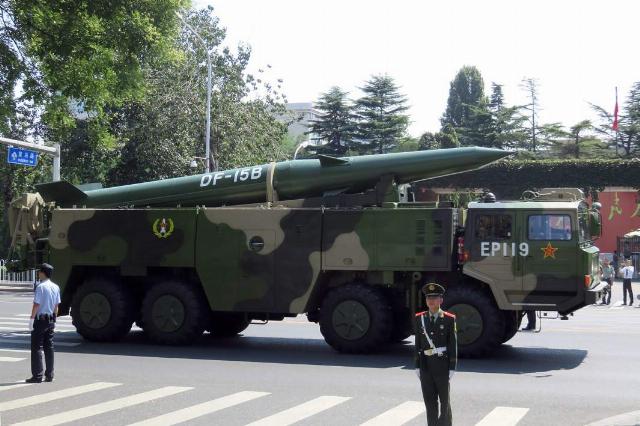
Chinese Dongfeng-15 tactical missile system on parade in Beijing
Image Source: Photo: commons.wikimedia.org
North Korea, according to SIPRI, has stocks of weapons-grade plutonium to increase its nuclear arsenals to 90 units. These will be warheads for intercontinental and medium-range ballistic missiles, as well as for operational and tactical missile systems. A very ambitious program for the creation and deployment of missile systems is underway in the DPRK, and it is highly likely that its real stocks of nuclear weapons may already be higher than the SIPRI estimate.
India and Pakistan are developing their nuclear forces with an eye to each other. The main carriers of both are ground-based ballistic missiles. Work is underway in both countries to modernize and create new missile delivery systems, but so far there are no prerequisites for a noticeable increase in nuclear stockpiles. And finally, Israel, according to SIPRI observations, is modernizing the reactor at the Dimona nuclear center, which is capable of producing weapons—grade plutonium - this may indirectly indicate the existence of a nuclear weapons modernization program.
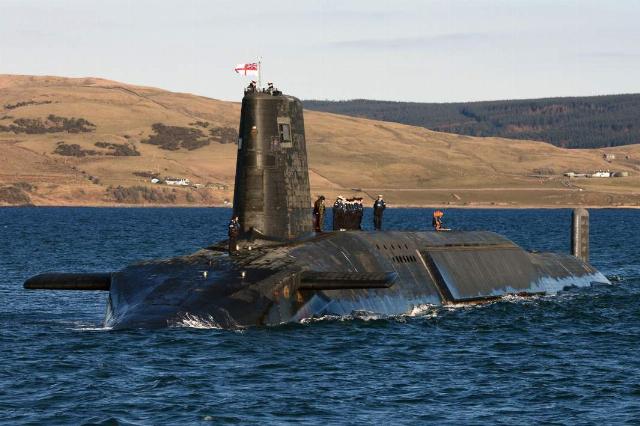
The British nuclear submarine HMS Victorious of the Vanguard type sets sail from the Devonshire shipyards on Barrow Island. Boats of this type are carriers of nuclear weapons
Image source: Photo: UK Ministry of Defence
Thus, the nuclear reserves of mankind are being updated and increased. These processes, on the one hand, statistically increase the risk of nuclear war, but on the other hand, it is nuclear weapons that are considered to be the guarantor of peace. In addition, the modern common arsenals of the main players in the nuclear race — Russia and the United States — are noticeably smaller than the nuclear reserves in the Cold War era. So, again statistically, it was noticeably more dangerous then than it is now.
In the current foreign policy environment, Russia pays maximum attention to the modernization and renewal of nuclear arsenals. More than 90% of the forces and means of Russia's nuclear deterrence forces today are new and advanced weapons.
Dmitry Kornev
